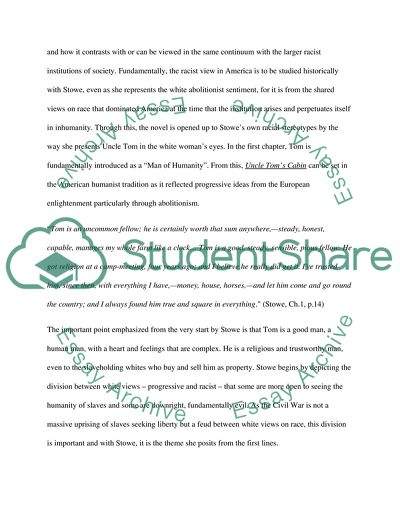Cite this document
(The Narrative of the Life of Frederick Douglass and Uncle Toms Cabin Literature review, n.d.)
The Narrative of the Life of Frederick Douglass and Uncle Toms Cabin Literature review. https://studentshare.org/literature/1747308-comparing-and-contrasting-uncle-toms-cabin-and-the-narrative-of-the-life-of-fredrick-douglass-as-a-historical-anayliss
The Narrative of the Life of Frederick Douglass and Uncle Toms Cabin Literature review. https://studentshare.org/literature/1747308-comparing-and-contrasting-uncle-toms-cabin-and-the-narrative-of-the-life-of-fredrick-douglass-as-a-historical-anayliss
(The Narrative of the Life of Frederick Douglass and Uncle Toms Cabin Literature Review)
The Narrative of the Life of Frederick Douglass and Uncle Toms Cabin Literature Review. https://studentshare.org/literature/1747308-comparing-and-contrasting-uncle-toms-cabin-and-the-narrative-of-the-life-of-fredrick-douglass-as-a-historical-anayliss.
The Narrative of the Life of Frederick Douglass and Uncle Toms Cabin Literature Review. https://studentshare.org/literature/1747308-comparing-and-contrasting-uncle-toms-cabin-and-the-narrative-of-the-life-of-fredrick-douglass-as-a-historical-anayliss.
“The Narrative of the Life of Frederick Douglass and Uncle Toms Cabin Literature Review”. https://studentshare.org/literature/1747308-comparing-and-contrasting-uncle-toms-cabin-and-the-narrative-of-the-life-of-fredrick-douglass-as-a-historical-anayliss.


